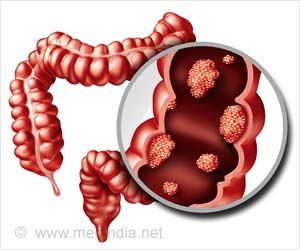Why is it important to get Diagnostic Tests Such as CT done as soon as possible after positive cancer screening tests? It is because by increasing waiting time between the positive screening test and the start of follow-up diagnostic tests, the risk of cancer can be increased, finds a new study

‘The longer a patient waits, the less likely they are to get the diagnostic testing done. There is also a risk that one day these precancerous or early tumors will become more advanced cancers that are more difficult to treat.
’





The longer a patient with a positive screening result waits for diagnostic testing, the worse their cancer outcomes may become.The authors, an interdisciplinary team of cancer experts from the Population-Based Research Optimizing Screening Through Personalized Regimens Consortium, urge patients who receive a positive screening to schedule a diagnostic test as soon as feasible. Articles considered were published between January 1998 and December 2017, conducted in an average-risk population, except in lung cancer, and used study designs that provided empirical evidence and evaluated the key question.
Although the findings of this research follow the longstanding conventional wisdom, this literature review backs up this message with patient outcome data. The authors make clear that each patient's cancer trajectory is different and there is no established timeframe that is OK to wait before a diagnostic test without risk of cancer progression.
"To ignore these findings is not patient-centered," said lead author Chyke Doubeni, MD, chair of Family Medicine and Community Health. "The longer a patient waits, the less likely they are to get the diagnostic testing done. There is also the risk that precancerous or early tumors will become more advanced cancers that are more difficult or impossible to cure."
The paper offers suggested targets for each of the four cancers within which diagnostic testing should be performed. The targets range from 60-90 days but were not able to ascribe a certain number of risk points based on exactly how long a patient waits.
Advertisement
The National Academy of Medicine has identified improving the timeliness and patient-centeredness of care as an important unmet health priority. Screening is proven to reduce the risk of death from some cancers and is currently recommended at grade A or B by the US Preventive Services Task Force in eligible persons for breast, cervical, colorectal, and lung cancers, which enables full coverage of those services under the Affordable Care Act.
Advertisement
Doubeni and his colleagues note that prompt diagnostic testing may also reduce mortality risk, and may also reduce worries about uncertainty about the procedure. Additionally, sooner is better, as provider or system delays in follow-up may increase the likelihood that diagnostic testing may not occur at all, such as changes in patient contact information or insurance coverage changes.
Based on the few direct studies cited, overall, there is evidence that if you wait longer than 60-90 days, generally cancer will progress. This is not surprising biologically, but the paper provides guidance on how to set metrics to measure improvement. Next steps for the research will seek out the most effective interventions to reduce the time to diagnosis for vulnerable and minority populations, and any patients who have barriers to timely follow-up.
Source-Eurekalert














